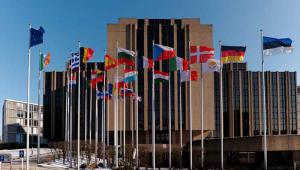The OECD and World Trade Organization have argued that using development aid to build trade capacity in poor countries is helping their economies diversify and empowering marginalised groups.
However, progress under the formal ‘Aid for Trade’ initiative, launched by both organisations in 2006, remains uneven across countries and regions.
“Aid for Trade is working,” said Angel Gurría, OECD secretary-general at the launch the report at the WTO’s 2019 Global Review of Aid for Trade in Geneva.
“It is having a real impact where it is most needed.
“That said, the path towards economic diversification is complicated by subdued trade growth and a decline in foreign direct investment (FDI).
“Rising trade tensions and protectionism are hurting growth prospects and any shift away from rules-based trade hits the most vulnerable countries and people hardest.”
The OECD and WTO have surveyed the progress made in 88 countries on economic diversification for their report, Aid for Trade at a Glance 2019: Economic Diversification and Empowerment.
In 47 developing countries – mostly in Africa and chiefly in agricultural sectors – concrete progress has been made since the launch of the Aid for Trade initiative, although many countries continue to struggle to use commerce to diversify their economies.
Launched in 2005, Aid for Trade aims to align donor and recipient countries’ strategies to promote trade as a means of reducing poverty.
The project seeks to help the least-developed countries improve the way they conduct international trade by overcoming infrastructure obstacles and improving access to markets.
The 2019 report says $409bn in official development assistance and $346bn in concessional loans has been used since 2006 to boost trade in developing countries by investing in areas like infrastructure, regulation or providing access to technical assistance.
A further $100bn in ODA and loans from donor countries was committed in 2017, and assistance between developing countries provided another $9bn.
The report calculates that every $1 invested in aid for trade has been found to generate $8 worth of exports in developing countries and $20 of exports in the least-developed countries.
● Annual inflation in the OECD area slowed to 2.3% in May 2019 from 2.5% in April, as energy price inflation dropped significantly to 2.4% from 3.8% in April, latest figures show. Food price inflation however picked up to 2.5%, compared with 2.3% in April.














